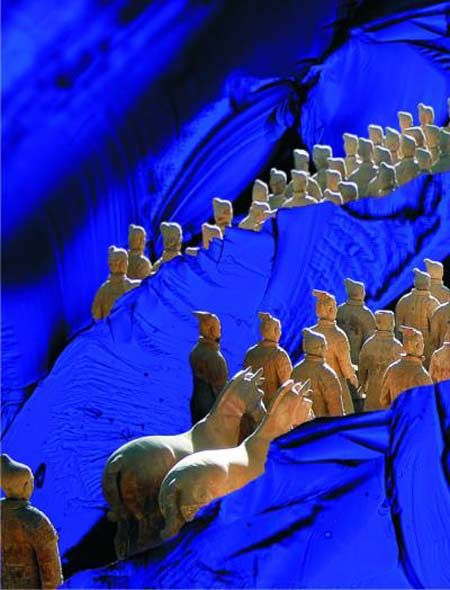Lost Dimension Yields Accidental Discovery

Using strong magnets and a pigment developed by ancient Chinese warriors, scientists turned a three-dimensional system into one with just two dimensions.
The transformation's discovery was accidental, but it provides physical evidence for several theories and might help scientists build faster computers.
Our three-dimensional world gives us three options for movement; up-down, front-back, and left-right. Sound waves make use of all three dimensions, expanding like a bubble from their point of origin. Guitar strings, likewise, vibrate in three dimensions when plucked.
Using all three dimensions is not required, however. Ripples on a pond's surface only take advantage of two dimensions. They roll forward and spread side-to-side, but they don't actually propagate up-and-down beyond the pond's surface.
Old is new
"Han purple" is a pigment used more than 2,000 years ago to color Xi'an terra cotta warriors of the Qian Dynasty. Scientists know the pigment as BaCuSi2O6—a highly symmetric crystal structure consisting of layers of spinning atoms.
In high magnetic fields and temperatures between minus 454 and minus 457 degrees Fahrenheit, magnetic waves in Han purple crystals exist in three dimensions. But when the researchers chilled the pigment closer to minus 459.67 degrees Fahrenheit—which scientists consider to be absolute zero—the magnetic waves merged into one large, undulating pulse that was restricted from the up-down dimension by the crystal's copper layers.
Sign up for the Live Science daily newsletter now
Get the world’s most fascinating discoveries delivered straight to your inbox.
"It becomes a reduced dimensional space," study co-author Neil Harrison of Los Alamos National Laboratory told LiveScience. "Imagine a world where you lost the third dimension. Then, of course, everything would be flat. It's kind of like that."
Critical point
The point at which the change of state occurs is called the Quantum Critical Point. Scientists have long used this theory to explain how some two-dimensional based systems, such as high-temperature superconductors, function but had no proof of it until now.
"It's a proof of principle," Harrison said.
Better understanding of the change, and the factors that influence it, might help scientists develop quantum computers, which theoretically use magnetism to perform many computations at once to produce answers to mathematical problems quicker than conventional computers.
The study was detailed online in the June 1 issue of the journal Nature.












